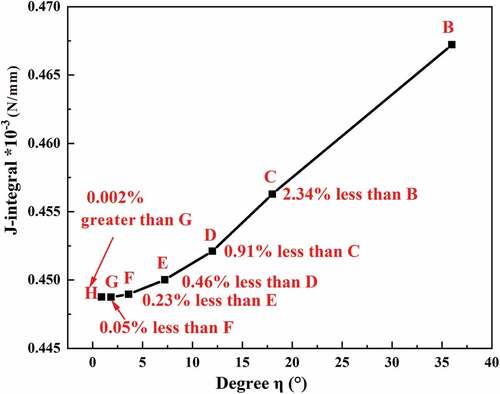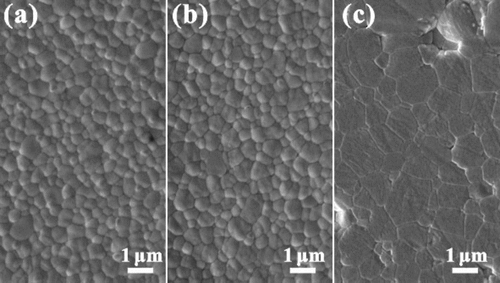Figures & data
Figure 1. SEM image of the groove and V-notch tilted by 30° [Citation12]. Two angles, θ1, and θ2, were used to control the morphology of the groove and V-notch, respectively.
![Figure 1. SEM image of the groove and V-notch tilted by 30° [Citation12]. Two angles, θ1, and θ2, were used to control the morphology of the groove and V-notch, respectively.](/cms/asset/84bfa138-0d60-4387-b1ce-9301fe5cfb70/tace_a_2156676_f0001_oc.jpg)
Figure 2. Schematic diagrams of the three models; (a) ideal crack model, (b) non-crack model, (c) groove model. u is the groove length, l is the crack length, Vn is the V-notch length, a is the overall length of the flaw, defined as a = u + l + Vn. In the ideal crack model (a), u = 0, Vn = 0, and a = l; In the non-crack model (b), l = 0, a = u + Vn; In the groove model (c), Vn = 0, a = u + l.
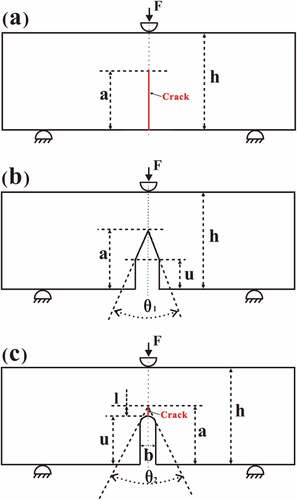
Figure 3. Grid-independent test of ideal crack model, (a) model diagram and node setting method and (b) global mesh generation map and enlarged mesh distribution map of the crack tip.

Figure 5. Global stress cloud image of ideal crack model and its stress cloud image enlarged at the crack tip.

Table 1. Grid-independent test of ideal crack model.
Table 2. Reference values of model material parameters [Citation23].
Figure 6. Comparison of LFEM results with EquationEquation (2)(2)
(2) based on the ideal crack model for three-point bending configuration.

Figure 7. Typical tensile stress distribution of (a) ideal crack model and (b) non-crack model with a V-notch tip angle θ1 of 90°in a two-dimensional three -point bending beam by LFEM.
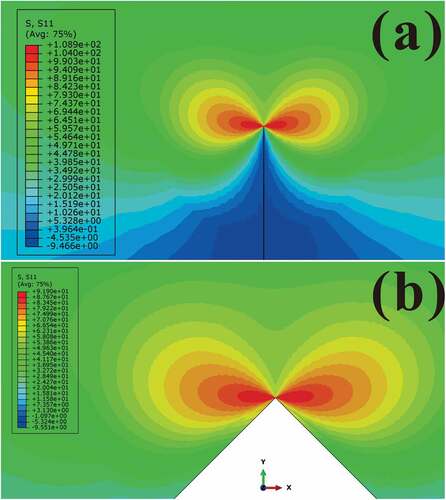
Figure 8. J-integral values of non-crack model with different u/a values and the stress cloud near the V-notch tip with (a) u/a = 0, (b) 0.5 and (c) 0.95, where the angle of the V-notch tip was maintained at 60°. The results when the angle of the V-notch tip θ1 was 30°, 90°, and 120° were the same as those at 60°, and they are not shown here.
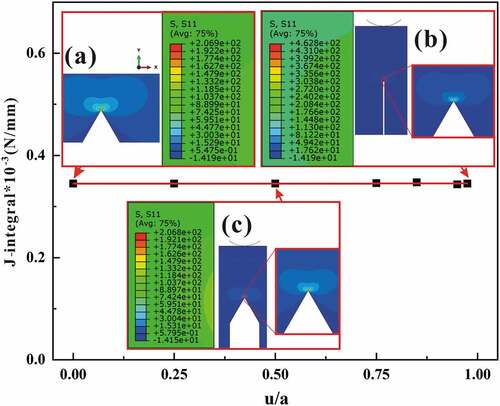
Figure 9. KIc/θ1/KIc/th for various angles θ1 (a) and (b) fitted curve. Very good agreement was achieved with the data obtained from the non-crack model.
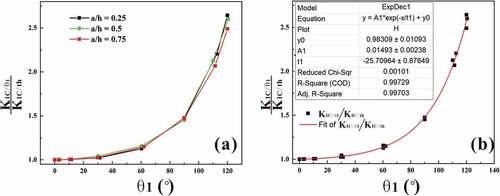
Figure 10. (a) Stress cloud image of a typical ideal crack tip including two marked angles. The stress in the area for a 30° angle was close to zero, while the 60° angle included a large local stress area. Stress cloud image of non-crack models with θ1 value of (b) 10°, (c) 30°, (d) 60°, (e) 90°, and (f) 120°.
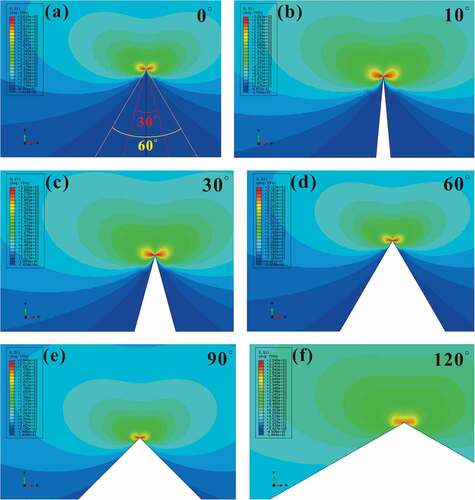
Figure 11. KIc/θ2/KIc/th for various values of angle θ2 (a) and the (d) fitted curve. Excellent agreement with the data was obtained by the groove model.
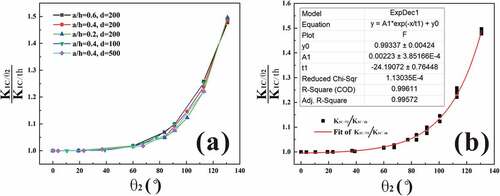
Figure 12. (a) Stress cloud images of a typical ideal crack tip. Stress cloud image of groove models with θ2 of (b) 19°, (c) 60°, (d) 91°, (e) 113°, and (f) 131°.

Figure 14. Experimental curve and curve predicted by EquationEquationn (6)(6)
(6) of the fracture toughness: (a) 2.3Y-TZP, (b) 3Y-TZP, and (c) Al2O3.
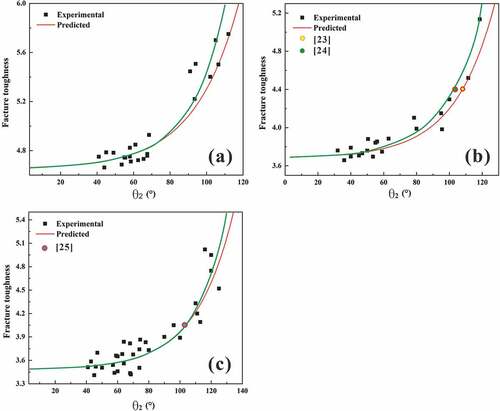
Figure 15. The XRD patterns of the (a) 2.3Y-TZP and(b) 3Y-TZP for the polished surface and fractured surface after fracture toughness testing. Vm, polished surface denotes the volume fraction of the phase transformation on the polished surface of the sample. Vm, fractured surface 1 is the volume fraction of the phase transformation on the fractured surface of the samples with small θ2, while Vm, fractured surface 2 is the volume fraction of the phase transformation on the fractured surface of the sample with a large θ2. m: monoclinic phase of zirconia, t: tetragonal phase of zirconia.
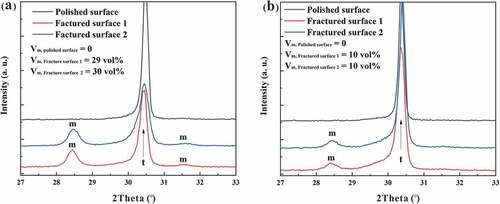
Figure 16. SEM images of (a) 3Y-TZP [Citation27], (b) Al2O3 [Citation29], and (c) 3Y-TZP [Citation28] samples with grooves and V-notches.
![Figure 16. SEM images of (a) 3Y-TZP [Citation27], (b) Al2O3 [Citation29], and (c) 3Y-TZP [Citation28] samples with grooves and V-notches.](/cms/asset/2dbf2d3b-0a1f-4ec4-afef-6e253ef0adef/tace_a_2156676_f0016_oc.jpg)
Table 3. Fracture toughness of 2.3Y-TZP, 3Y-TZP and Al2O3 samples.
Figure 17. (a) Experimental and predicted curves of KIc in ZrB2 and ZrB2-SiC specimens with various θ1 and θ2 values [Citation17]. Images of the notched test bars with θ1 of (b) 3°, (c) θ1 of 20°, (d) θ1 and θ2 of 9° and 50°, respectively, and (e) θ1 and θ2 of 21° and 140° [Citation17], respectively.
![Figure 17. (a) Experimental and predicted curves of KIc in ZrB2 and ZrB2-SiC specimens with various θ1 and θ2 values [Citation17]. Images of the notched test bars with θ1 of (b) 3°, (c) θ1 of 20°, (d) θ1 and θ2 of 9° and 50°, respectively, and (e) θ1 and θ2 of 21° and 140° [Citation17], respectively.](/cms/asset/66bb85e5-f2fa-47eb-a59d-82b6b60498d6/tace_a_2156676_f0017_oc.jpg)
Table 4. Fracture toughness values of materials with different θ1 and θ2 values.

